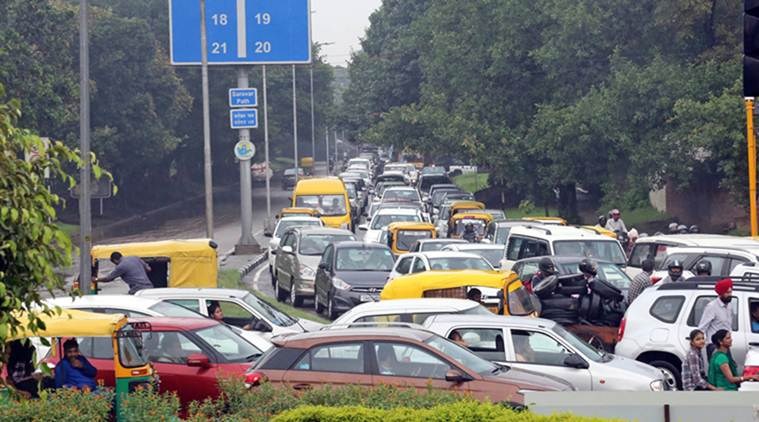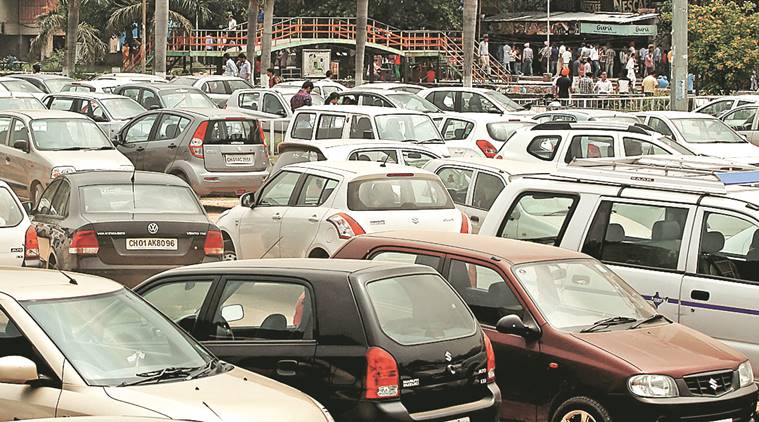 According to a study, it has been found that in traffic jams, as the fan sucks the dirty air from outside to inside the vehicle, it results in an accumulation of pollutants in the car (Source: File Photo)
According to a study, it has been found that in traffic jams, as the fan sucks the dirty air from outside to inside the vehicle, it results in an accumulation of pollutants in the car (Source: File Photo)
Around 1.6 million people die from lung cancer every year, the cause for which primarily is considered to be tobacco smoking. But lung cancer can also occur in people who have never smoked. “Lung cancer in non-smokers is considered the sixth or seventh most common cause of cancer deaths in America. In our country also, large number of patients are being diagnosed with lung cancer sans history of tobacco smoking. The causes of lung cancer found in non-smokers are air pollution, both outdoor and indoor, exposure to secondhand smoke, asbestos exposure, exposure to radon gas, diesel exhaust fumes and genetic predisposition,” explained Dr Vikas Maurya, director; head, department of pulmonology; sleep disorders, Fortis Hospital, Shalimar Bagh, New Delhi.
According to Dr Maurya, exposure to polluted air at traffic jam zones are also contributing to the increase in the number of lung cancer cases. Published in the Environmental Science: Processes and Impacts journal, a new research indicated that pollution levels inside cars were found to be up to 40 per cent higher with drivers being exposed up to “29 times more harmful pollution particles while in traffic jams as compared to free-flowing traffic conditions”.
According to the study, it has been found that at traffic jams, the fan sucked the dirty air from outside to inside the vehicle, resulting in an accumulation of pollutants in the car. Therefore, long-term exposure to toxic air at traffic jams along with daily exposure in the ambient air can result in lung cancer, mentioned Dr Maurya. It is important to understand what this toxic air is all about and how it can cause lung cancer. Vehicle emissions account for 25–40 per cent of outdoor air pollution apart from pollution from industries, energy and household heating.
Various studies have indicated that ambient exposure to nitrogen oxides, sulfur dioxide, and fine particulate matters released from vehicle emissions significantly ups the risk of lung cancer.
Also, animal studies indicate that when sulfur dioxide is inhaled, it could cause multi-organ DNA lesions including in the lung which can, in turn, develop into cancers. In retrospect, the surface of fine particles can absorb various chemicals. Compared to coarse particles, fine particles are more likely to pervade indoors and be inhaled deeply in the lung; therefore, ambient exposure to fine particles is more prevalent and more dangerous, mentions Dr Maurya.
Considering that the risk of lung cancer increases with a higher exposure level, the association between air pollution and lung cancer has found to be much stronger in heavily polluted areas and zones like traffic jams.
 How much time do you spend at a traffic signal? (Source: Express Photo)
How much time do you spend at a traffic signal? (Source: Express Photo)
Measures to decrease exposure to polluted air at traffic jams
*Pull up the car windows and switch off the fan to decrease exposure to pollutants at traffic jams, or at traffic signals.
*Fans should be installed to re-circulate air within the car without drawing polluted air in from outside.
*Ensure the distance between your vehicle and the vehicle in the front is good enough while in traffic jams, not just for your physical safety but health-wise too.